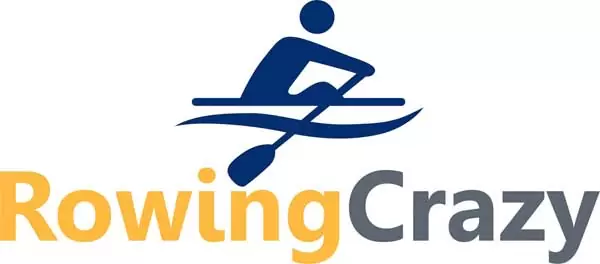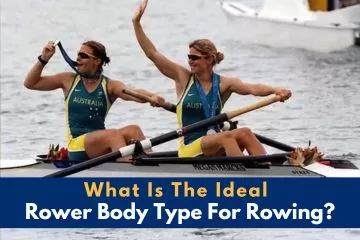
Hi everyone my name is Rachael Taylor. Today and today I want to talk to those of you who are thinking of joining a rowing club or perhaps taking up rowing in school but think you don’t have the perfect body type.
Successful rowers typically have a tall, lean physique with long arms and legs that allow for powerful, efficient strokes. They also tend to have lower body fat levels and greater muscular development, particularly in the back, core, and lower body.
If you have a short torso, that is also helpful as this means that you have a short sitting height and don’t create as much wind resistance.
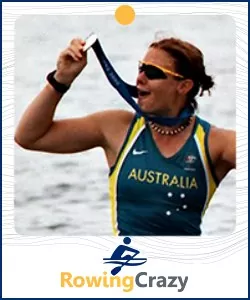
However, the truth is that there is a place for nearly everyone in the row boat. Yes, some people make better rowers because they have the perfect body type, but that doesn’t mean you should give up your dreams.
Let’s face it, not everyone is cut out for professional rowing or the Olympic Games, but that doesn’t mean you can’t row!
In this article, I want to talk about what the perfect rower body type is so you can take a good look at yourself and be realistic.
If you have it, why not use it?
Imagine Britney Griner not playing basketball? Or Michael Phelps not swimming? Some people have the perfect body, but even those with less than perfect body can still be successful!
Do you have the ideal rower body type? Let’s see.
What Is the Perfect Body Type for a Rower?
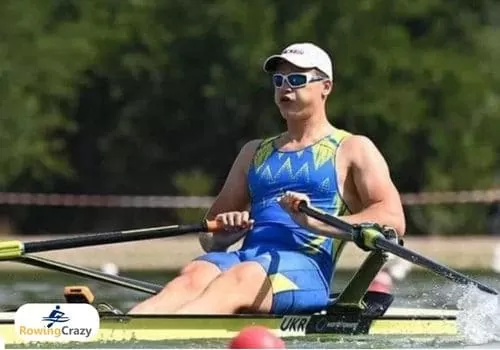
The short answer here is that most professional rowers are tall and lean, with long upper and lower limbs but short torso. These physical traits enable them to do those powerful strokes while sitting low on the boat. They have well-developed muscles in the back, core, and legs and a low body fat percentage.
The ideal body type for a rower is finely tuned to balance strength and endurance. Rowers require a physique that maximizes power output while minimizing resistance and weight.
As a general rule, rowers are tall, typically between 6 feet (183 cm) and 6 feet 6 inches (198 cm), with long arms and legs that allow for a greater reach (power) during each stroke.
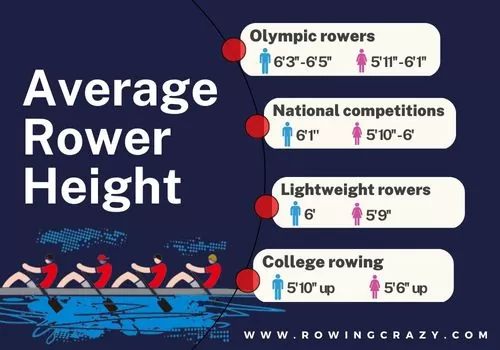
Muscular development is also crucial, particularly in the upper body, core, and legs. Strong back, shoulders, and arms are essential for generating force in the oar strokes, while a robust core provides stability and power transfer from the legs to the upper body.
Take note, however, that excessive muscle can add unnecessary weight, which is why lean muscle mass is preferred. It’s a slight catch-22 situation where you want muscle but not too much. You want to be tall but not excessively tall, you want to be thin but also need muscle.
See how this works?
A rower’s body should also possess excellent cardiovascular endurance to sustain high-intensity efforts over extended periods. Most rowers achieve this through cross-training, resistance training, and countless hours on the erg or indoor rowing machine, which uses the same muscles as those used in on-water rowing.
Having lower-than-normal body fat is important as well since it enhances the power-to-weight ratio.
Let’s not forget that while certain physical characteristics may be helpful to succeed in this endurance sport, equally critical are the person’s dedication, technique, and mental strength.
What If I Don’t Have the Ideal Rowing Body Type?
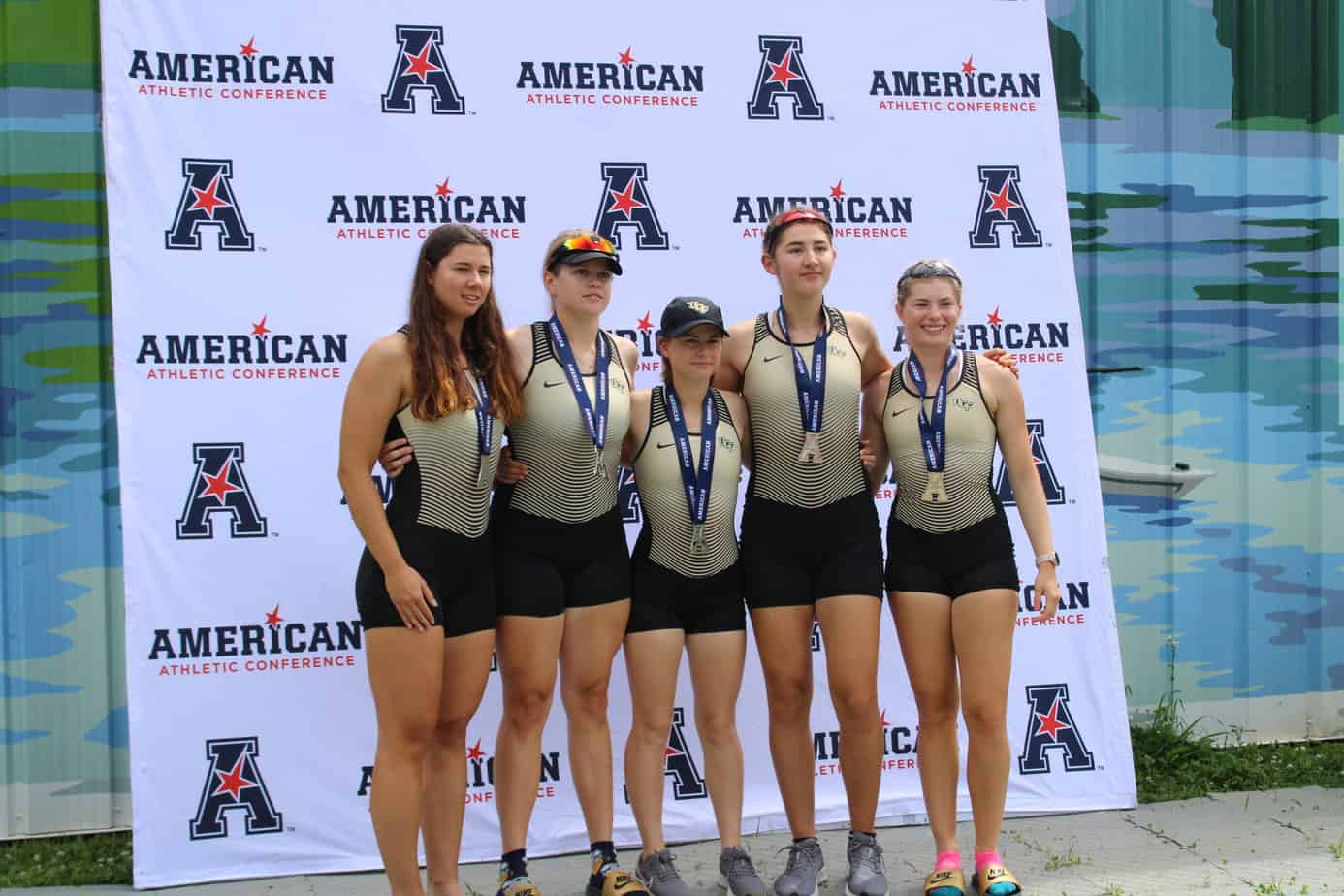
UFC Women’s Rowing Team
I am frequently asked this question, and I want to emphasize that if you aren’t blessed with the ideal rower body, it doesn’t mean that you can’t become involved in rowing.
First, as I mentioned earlier, not everyone has the time or is cut out to be a professional rower. The good news about that is this leaves you open to all kinds of other options.
You can still enjoy rowing in college. You can also join a club and row in local regattas. There are Master rowing groups where people become champion rowers within their own age group. If you have a lot of experience and have done well in your rowing performance, even if you weren’t a winner because of your body type, you can always coach.
Last, but not least, you can always be the coxswain if you are short and very light. Never look down on the coxswain position. These are highly prized positions, and remember that the coxswain has the final say in how those “optimal rowing body types” perform.
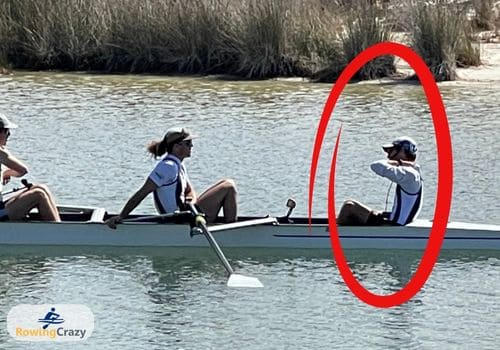
Coxswain in National Rowing Regatta
Yes, rowing is probably one of the most physically demanding endurance sports you will ever participate in (sorry Rugby players, but that’s the way it is!), and not everyone has that optimal rowing body type.
You can learn more about the different crew positions here.
Don’t let your height discourage you and think that you can’t get involved in rowing. You can and you should!
What Makes You a Recruitable Rower?
Coaches are always on the lookout for those who have an ideal rowing body type. Everyone wants winners on their team. So if you see someone who has what could be an amazing rower body, it makes sense to try to recruit them and encourage them to join your team or club even if the person has never rowed before.
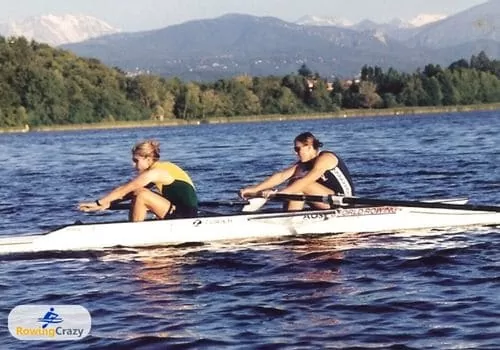
Here I am rowing with Kate Slatter, Varase, Italy 1999
Both male and female rowers can be elite rowers, especially if they have the perfect body and are willing to put in the work.
We’ve talked about the physical aspect, but the mental qualities in a rower as just as important.
A recruitable rower demonstrates discipline, an ability to focus, and willingness to push through challenges (read: pain).
Rowing is a demanding sport that requires mental resilience to withstand rigorous training and the pressure of competition.
Potential candidates should also have the ability to work well with a team. This ability is highly valued in rowing. Coordination among rowers is essential for the efficient movement of the boat.
A recruitable rower should be a team player, able to communicate effectively and adapt their stroke to harmonize with their teammates.
I’ve seen plenty of rowers who have the optimal rowing body type but are so self-centered that they can’t work with others. Or they simply don’t have the drive required for this sport.
If you don’t have a competitive nature, you should consider kayaking or canoeing.
This isn’t meant to be criticism, just facts.
Yes, your body type matters, but it’s useless if you aren’t competitive, don’t have the willingness to suffer a little bit to reach a goal, and can’t work with a team (although you could always go for single sculling!)
Why Do Rowers Have Such Broad Shoulders? Do I Need That to Be a Rower?
The short answer here is that rowers typically have broad shoulders due to the nature of the sport and the specific muscle groups that rowing utilizes.
The longer answer is a bit more complicated, and it actually has more to do with the back muscles.
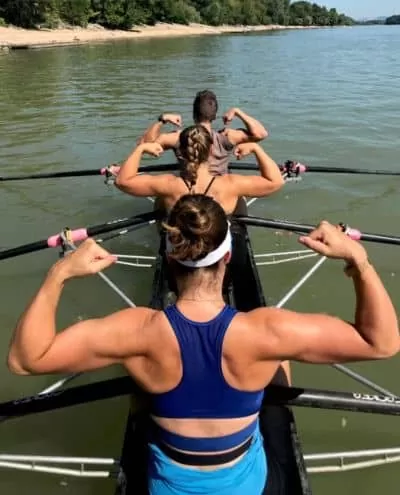
The primary muscles engaged when you are rowing are the latissimus dorsi, commonly called the lats, which are the large muscles located on either side of the back. These muscles play a very important role when rowers are driving the oar through the water.
The constant and repetitive pulling motion required in rowing results in significant hypertrophy (an increase in muscle size) of the lats, which leads to broader shoulders.
Now it IS also about the shoulder muscles known as the deltoids or delts. These muscles are engaged during the catch phase of the rowing stroke and are responsible for lifting the oar out of the water before the next stroke.
The repetitive motion of lifting and turning the oar causes the deltoids to grow and develop, which also gives a rower the broad shoulder look.
The specific motion of rowing uses muscle groups that make the upper body larger and give us that broad shoulder look.
What Is the Ideal body Fat Percentage for a Rower?
Oh yes! The body fat question!
The ideal body fat percentage for professional rowers typically ranges from 10% to 15% for females and 5% to 10% for males.
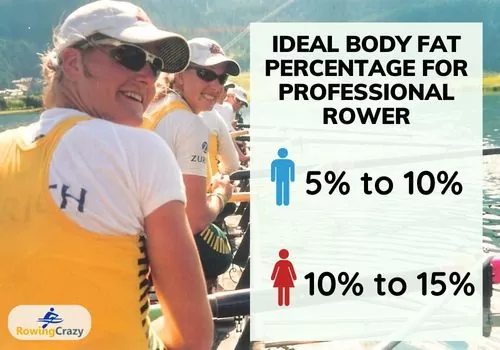
This would be the ultimate goal for elite rowers, such as Olympic hopefuls. Don’t be surprised if your body fat levels are higher.
Maintaining a relatively low body fat percentage is crucial for optimizing performance, as excess body fat can hinder speed and efficiency in the boat, as you would imagine.
Rowers need to strike a balance between building lean muscle mass and minimizing unnecessary weight.
Hard work on the erg, weight training, and proper nutrition will help you lower and maintain a lower body fat percentage.
Don’t worry too much about your current body fat level unless it is very high. Take it from me- a few months of working out on the erg, cross-training, and rowing workouts will pare down that extra fat in no time.
Rowing works about 86 percent of your muscles and burns up to 900 calories an hour. Body fat will be the least of your worries!
To Sum Things Up
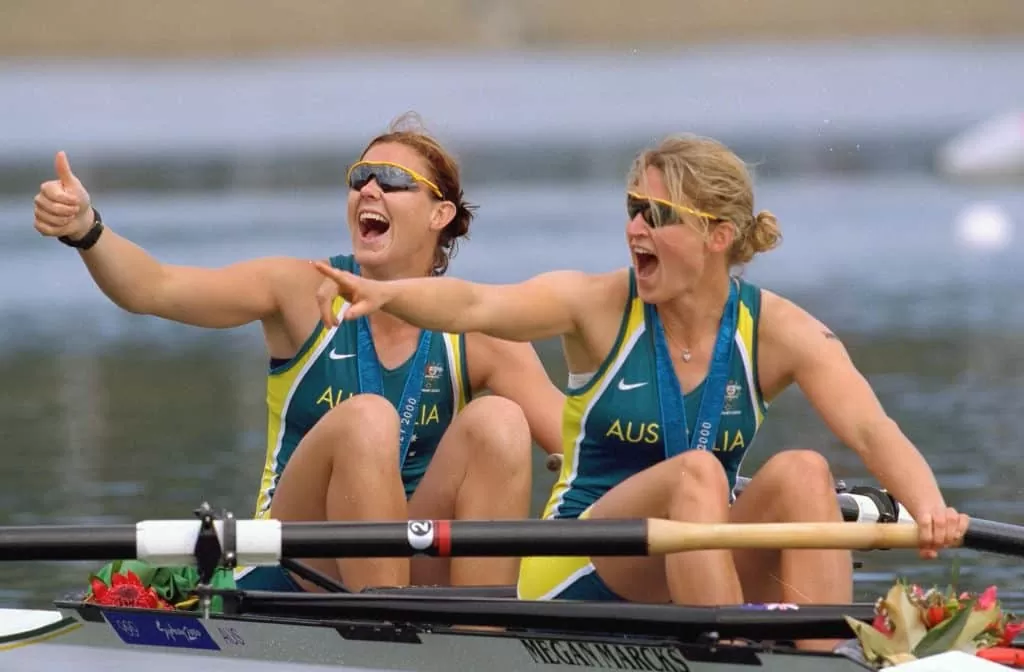
Rachael Taylor & Kate Slatter of Australia Winning Silver at the Sydney Olympics
The ideal rower body type is a mix of height, lean body mass, low body fat percentage, strong legs and core muscles. This should come with a competitive nature, a good sense of teamwork, and a little bit of a masochistic nature.
No, I’m not kidding about that last one.
Rowing is the hardest sport you will ever play, and if your endurance capacity for stress and some pain is very, very low, you might want to consider another sport.
If you’ve got what it takes, however, the overall rowing experience is unmatched.
Think you’ve got what it takes? Talk to your school’s rowing coach or someone at your local rowing club. It will all come out in the shell, friend, and you have nothing to lose by trying.
Wishing you tremendous success and a happy rowing experience!
Written by Rachael Taylor – RowingCrazy.com
Olympic Silver Medalist Women’s Coxless Pair – 2000 Sydney Olympic Games, Rowing World Championships Bronze Medalist (1999) & Silver Medalist (2002) In The Women’s Eight
Rachael is a mother of two, former Australian Olympic Rower with a successful international rowing career. She won medals at the Rowing World Championships and a silver medal at the 2000 Sydney Olympics in the women’s coxless pair. She now enjoys sharing her knowledge with the rowing community



